Amicus Productions was a stable of 1960s British Horror. TERRY SHERWOOD goes back to his childhood to rank the studio’s best horror anthologies
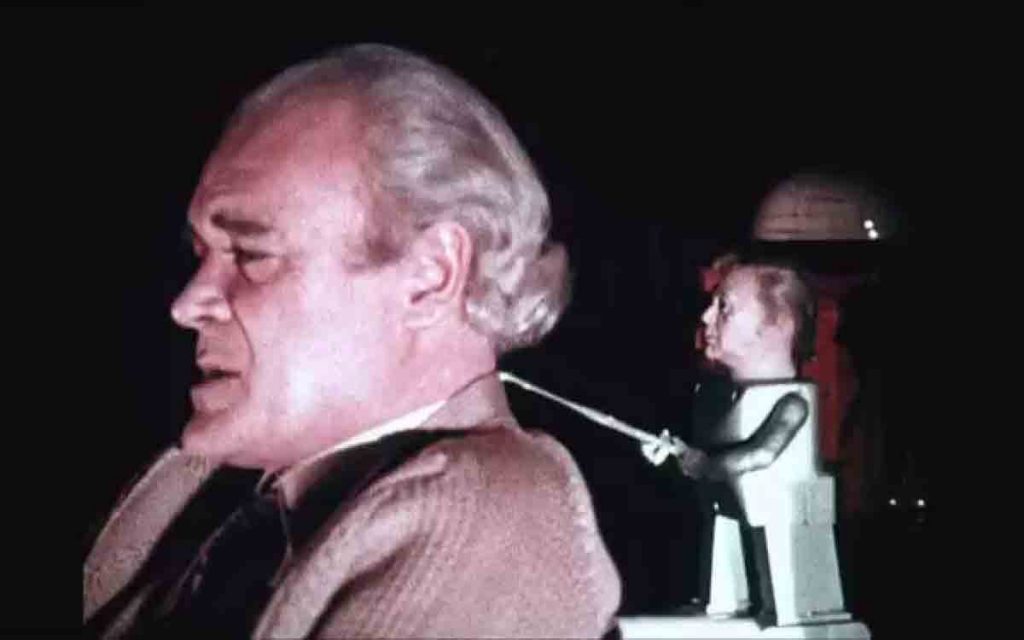
British company Amicus Productions, headed by American-born Milton Subotsky and Max J. Rosenberg, was based at Shepperton Studios. Together, these two forged their way into the horror genre with a series of supernatural films based on the anthology style of the classic British film Dead of Night (1945) and American EC comics of the 1950s.
Amicus is often thought of as a poor sibling to Hammer Studios, which is easy to understand since they used many of the same actors and technicians.
And although imitation is flattery, Amicus had singular moments that they could call their own, particularly these pictures that featured big stars who were either ‘slumming’ or wanting to try something different, plus good directors before the formula kicked in.
Musically, Amicus tried in the beginning to emulate the Hammer sound (primarily theme music). This aspect of imitation was out of place considering these pictures were set in modern times.
The story format, while popular with EC horror comics of the late 1950s, featured lurid tales of terror or revenge with twist endings.
It ran its course as the series lost their budget and the element of comedy became more important than scares.
I have seen a few of these pictures in the theatre during their first runs. Catching up with them on the various formats available today did not diminish what they were trying to do. I thought I would highlight one or several moments from each picture that stand out for me since film is a matter of taste.
My top 8 Amicus films
Here then, my top eight (since they only did eight) from Amicus:
1. From Beyond the Grave (1974)
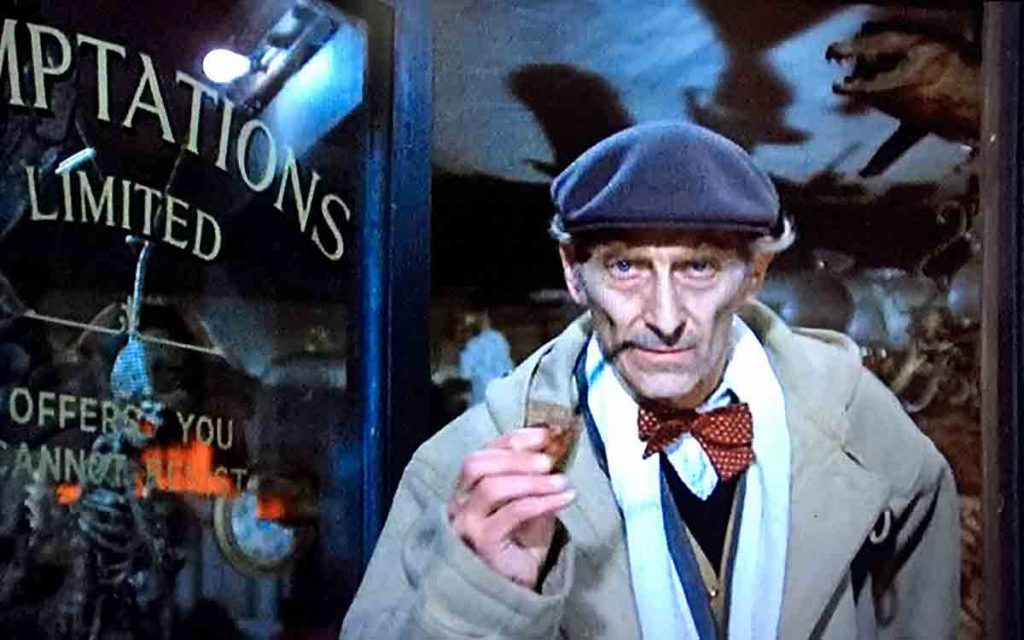
The scope of these stories and the actors’ commitment make this the strongest of the series. You have Peter Cushing being the elegant proprietor of a shop called Temptations. Cushing is erudite, smooth and at the same times slightly playful with customers. David Warner, Donald Pleasence (with his real daughter Angela), Ian Bannen and actually the brief but brilliant older Diana Dors taking a turn as Mabel, a bullying wife in one story are highlights. The stories draw on mirrors, doors, a type of voodoo and entity possession. The camera work and direction is top notch, giving the story time to build; all delightfully anchored by Cushing.
2. Dr Terrors House of Horrors (1965)
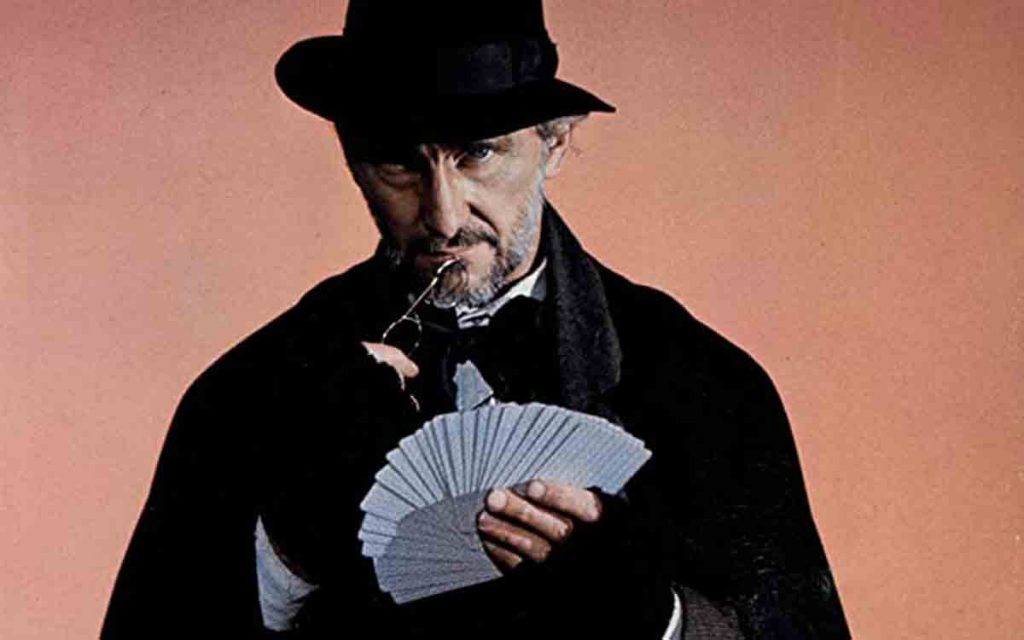
Peter Cushing again runs the show. This time he is more flamboyant as the mysterious man Doctor Schreck who accosts four men on a train. Each man will draw a card foretelling his future.
The name Schreck, which is a bit of overkill for Horror fans, is passable since the picture features some tasty acting by Christopher Lee. Shedding his Hammer monster persona, we hear that magnificent voice deliver invective after acid stained invective against the proceedings happening in the rail car.
People in the various stories are Hammer alumni Katy Wild, Canadian-born Donald Sutherland, Bernard Lee, Jeremy Kemp, and Michael Gough to name just a few. Production-wise, the rail car moments look to me like scenes from the Brian Clemens, Albert Fennell and Canadian Sidney Newman ITV series The Avengers with moving backgrounds and rocking motions on the trains.
The use of zoom in and changing focus to transition were also similarly used in the series. All in all a strong film if you get around the telegraphed ending.
3. Tales from the Crypt (1972)
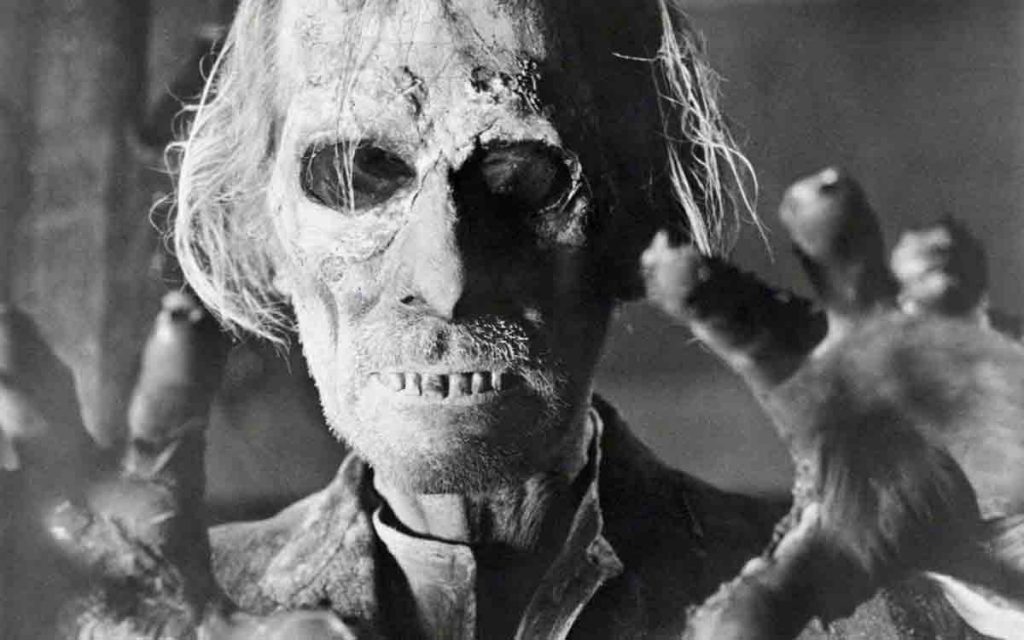
A surprisingly influential film with a large budget that I saw several times in a theater. It went on to spawn the highly viewable television series of the same name. Here you have five stories that come directly from the pages of EC comic’s series. The premise revolves around five people exploring a cave, and come up through a chamber with gate keeper (Ralph Richardson). He tells each of them how they will die.
You also get Joan Collins being menaced by a possible Santa Claus, and Ian Hendry chased by a leather clad skeleton on a motor bike.
Peter Cushing as the sad but vengeful corpse, rising to say that “Someone is mean and cruel right from the start.” The film ushers in a moment of gore in a story straight out of the lurid comic it was based on.
It’s not the violence of Horrors of the Black Museum (1959), but it did cause the people in the audience when I saw it to actually gasp. Ralph Richardson amusingly remarked that his role was to play an old man and in this case they didn’t have to use any makeup.
4. The House That Dripped Blood (1971)
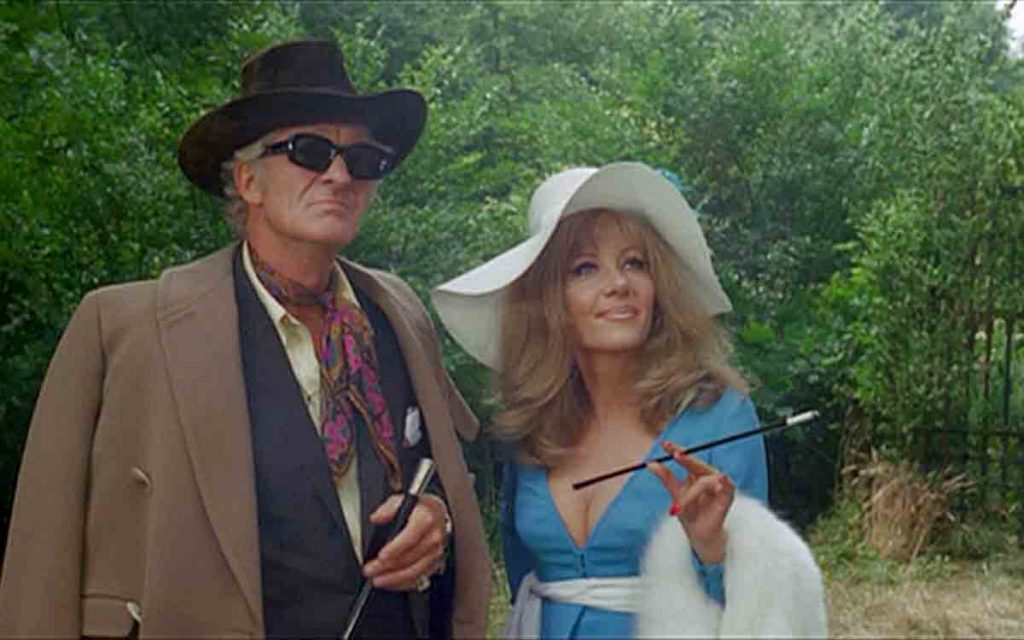
Another one I saw several times in the theatre in all its glory. A Scotland Yard Investigator is looking up case files. Many familiar people are in this entry, including Peter Cushing, Christopher Lee, and Denholm Elliot. The picture was penned by Robert Bloch, who penned the novel that Hitchcock based Psycho on.
Bloch is an accomplished writer, yet his work here relies on the twist ending more than the EC comic did as in the earlier Torture Garden (1967). The highlight is the story with Jon Pertwee and Ingrid Pitt involving an actor purchasing a vampire cape with predictable results. It’s handled with great fun and humor plus the naturalness of Ingrid Pitt grinning with fangs. The last of the great series’ entries.
5. Torture Garden (1967)
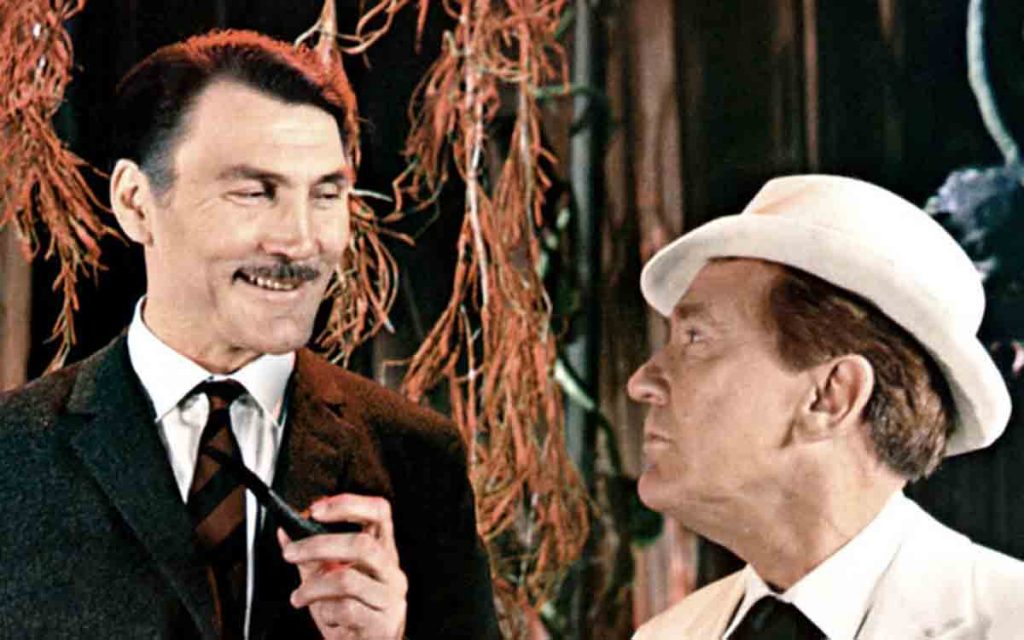
No, not the fetish club in London of the same name but the film made in 1967. The shift in tone and style of this entry in the series was not met with universal applause. The host was now Dr. Diabolo, played with scene chewing aplomb by American Burgess Meredith. Diabolo comes complete with cape, top hat and a pointy mustache right out of the cliché silent movie film school.
He runs a sideshow where it is promised for an additional fee to see something really frightening. Inventively, the small group follows the good doctor to a statue of the Atropos, who is the Greek Goddess of Fate. Each are instructed to look at the statue’s shears to learn their story. Familiar faces such as Peter Cushing are performing along with Hammer glamour girl Barbara Ewing. This picture sees more American stars such as Jack Palance, Canadian born Beverly Adams, and Hammer stalwart Michael Ripper.
The stories are taken from the work of Robert Bloch. Perhaps doing so was cheaper than paying EC Comics? Highlights include a story about the horror of a piano, bringing to mind the Japanese film House of Hansu (1977). There is also social commentary on the machine of Hollywood and a wonderful piece of horror chicanery concerning Edgar Allan Poe. Freddie Francis keeps the pace going even with Dr Diabolo tossing and leering around the set. Something is not quite together with this one and it is a turning point.
6. The Vault of Horror (1973)
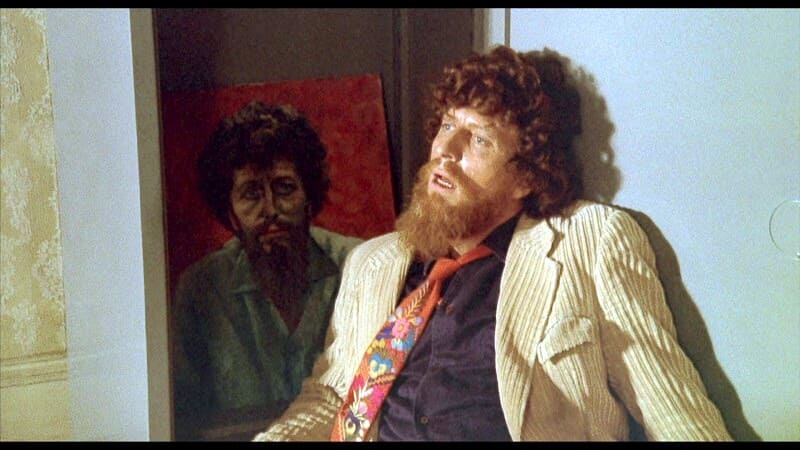
There was almost a tie between this picture and Asylum (1972), since inevitably what happens to most ideas, when you find something that works, it is mass produced and the quality declines. You do have moments in The Vault of Horror (1973) with good interplay between Terry Thomas and Glynis Johns.
Thomas plays himself with his high pitched, quick delivery admonishing Johns for mucking up his home in some small way. The story dissolves into farce with Johns going through a small Hell of knocking things over, scratching vinyl records and climaxes in the destruction of the downstairs workshop while starting out to fix a picture. This picture relies more on gore, with jars of objects arranged nicely at the end of a particular story.
A shock? Yes, for some, but such were the times in Horror cinema. The comedy continues as actors Robin Nedwell and Geoffrey Davies appear in a segment trying to capitalize on their popularity in the Doctor in the House television series. Tom Baker does a good turn as an eccentric artist in a vile wardrobe who is out for revenge as he finds he has been cheated out of money.
The usual suspects are there; Denholm Elliot and Peter Cushing, who, knowing his love of prop work, must have had a field day playing a very precise tailor. Terribly under used favorite of mine was Edward Judd who gets to stand and say a few words and laugh. Curt Jurgens is erudite as a magician trying to steal a rope trick from a fakir.
Given such circumstances, you can imagine it doesn’t go as planned. Experienced Roy Ward Baker directs competently, moving the action well that originates from the pages of EC comics.
7. Asylum (1972)
The series for me seemed mass produced, almost like a television series. The saving grace for this entry is Charlotte Rampling and Britt Ekland battling it out in a “Stepford wives” story of the model industry.
Herbert Lom is excellent as a mysterious maker of dolls that do nefarious things. Robert Powell is quite at home with the framing story as a Doctor inquiring about a new position at an asylum and being interviewed by Patrick Magee.
Roy Ward Baker remains in the director’s chair, giving credence to the idea that the company shot both Asylum (1972) and Vault of Horror (1973) at the same time. Robert Bloch again supplied the adaptions of his own stories.
8. The Monster Club (1981)
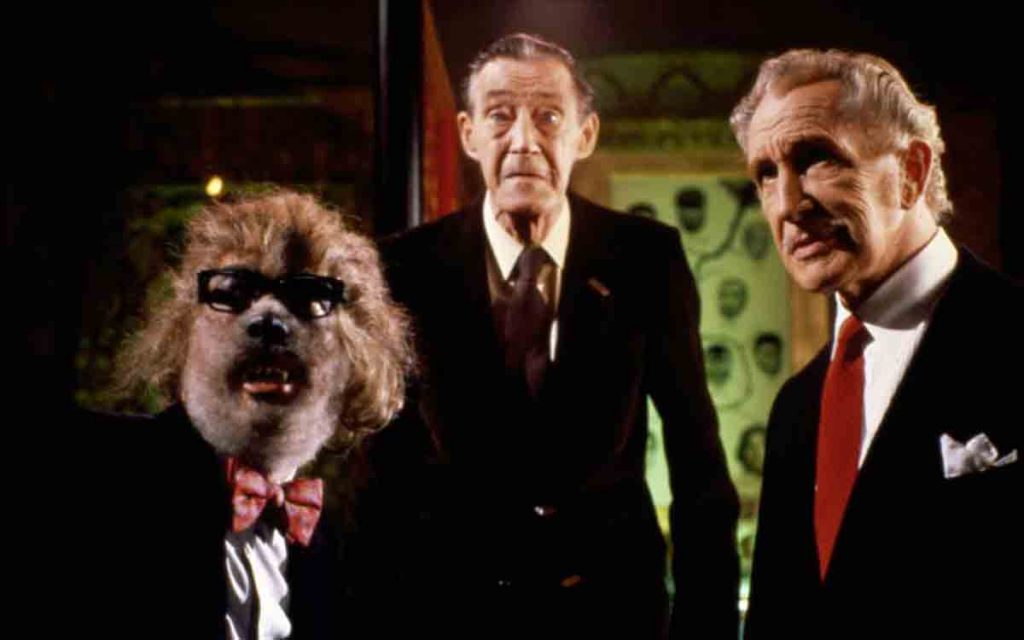
The last gasp was not actually an Amicus production but from Chips Productions, headed by Milton Subotsky. Roy Ward Baker maintains his hold on the director’s chair.
American stars abound in this one: John Carradine, Vincent Price, Stewart Whitman and a glimmer from Donald Pleasence, Patrick Magee, Britt Ekland and Simon Ward. A total departure for the stories as the work of English author R. Chetwynd-Hayes was adapted.
Targeting the teenage audience, the producers used pop music for the first time with a band called Night performing on screen. If you can handle two police constables turning around and grinning at you with large plastic fangs from the nearest joke shop, then the humour in this film is for you.
Chiefly, it is the on screen pairing of Price and Carradine, who were becoming genre darlings. Funny to me that I saw this one on television and liked it. Such was the lens of the younger me.
Do you agree with our Amicus choices? Tell us in the comments section below!




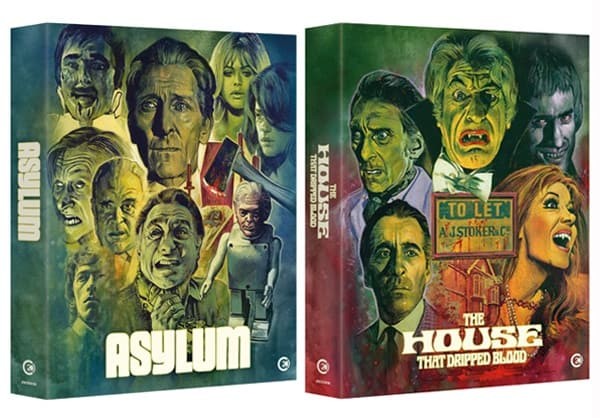
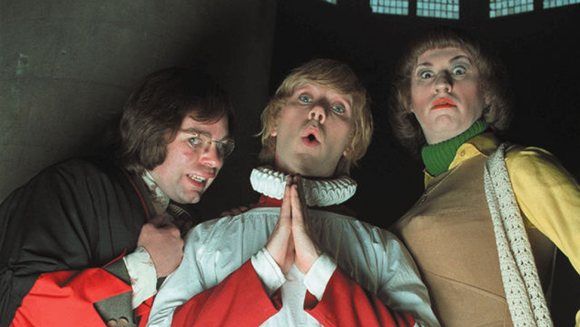
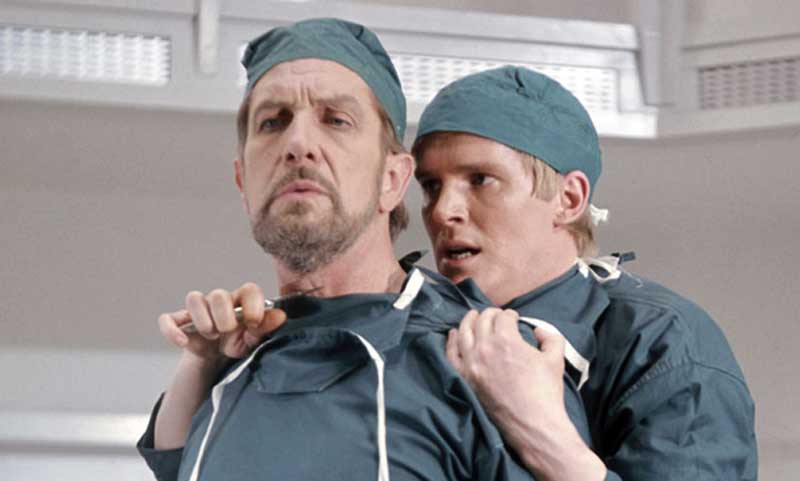
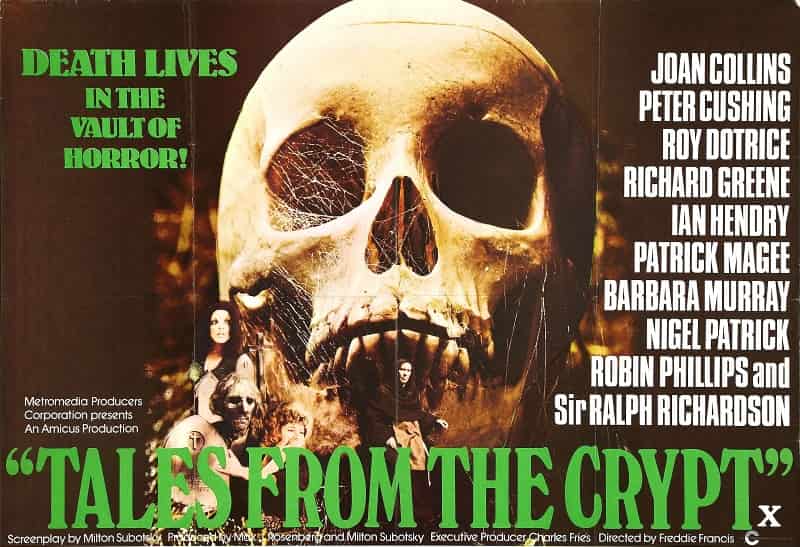
I would have thrown in (and many do):
Tales That Witness Madness (1973)
The Uncanny (1977)
Though personal tastes will certainly dictate every one visitor would change positions on the list here and there, I totally agree that From Beyond the Grave ticks all the portmanteau subgenre’s boxes, making it therefore the best of all. Not to mention the framing story is a showcase of Cushing’s Thespian prowess, hence it’s being the best ever in the Amicus’ repertoire and IMO, second only to Dead of Night’s among all the other horror anthologies.
Correction: Cushing did not play the tailor in “The Vault of Horror”; that was Barry Morse in the movie “Asylum”; of course Cushing was also in “Asylum” as the tailor’s mysterious customer who wants a special suit created for his son.
For me, these Amicus anthologies are so often a handful of duds and one worthwhile tale. Example: “From Beyond the Grave” has that fun story The Elemental. Yes, there’s also the creepy installment with Donald Pleasance that climaxes with wedding vows, but overall this film is mediocre for me. I give extra points, though, for including Peter Cushing as the antique shop proprietor. He is always so good.
Another example of an anthology with just one solid story is “Torture Garden” whose last tale, about collecting Poe memorabilia, is a showcase for Jack Palance and lets him chew the scenery like a hungry termite. He is terrific here.
“Tales from the Crypt” is of course best known for the Christmas story and also for the final tale at the home for the blind. Both are memorable but the sheer wickedness of the final sequence makes it linger in the mind long after. Diabolical revenge.
Also, Cushing nearly breaks your heart as the lonely widower who receives poison-pen Valentines.
I like the movie “Dr. Terror’s House of Horrors” but mostly for the opening bit in the train– after that, the only part I liked was the werewolf story, the first one we see.
Terry-Thomas and Glynis Johns are fun in “The Vault of Horror” chapter entitled The Neat Job, its only tale that I found decent … even though it is all for laughs with its ghastly punchline.
My favorite Amicus portmanteau is probably “The House That Dripped Blood”. Its entries are all pretty good. And the whole idea of a fictional character (Dominic) entering the real world is very cool and done skillfully.
I keep returning to Denholm Elliott’s portrayal of a writer of trashy horror being driven mad in The House that Dripped Blood.